INTRODUCTION
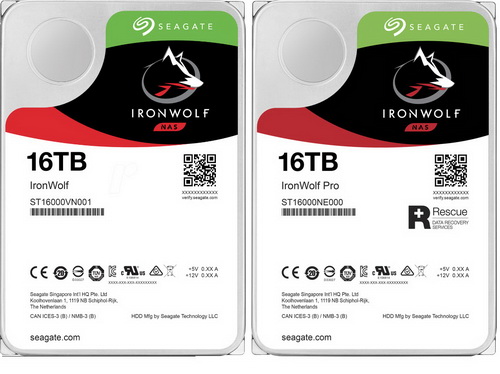
3.5 inch hard disk drives have always enjoyed the highest possible price/capacity ratio found in storage media and with projected availability for 22TB capacity models by the end of 2020 things are only getting better for demanding professionals, enthusiasts and consumers in general with very high storage capacity demands/needs. If higher capacities weren't enough however Seagate is also planning on releasing their very first multi-actuator technology (MACH2) HDDs (dual actuator 14TB models at first) by the end of the year which should boost sequential read and write performance all the way up to 500MB/s (still no word on availability however). With that out of the way as we've already mentioned Toshiba may have been the very first HDD manufacturer to officially announce an 16TB 3.5" model (MG08) in January of this year but Seagate actually beat both Toshiba and WD in drive availability not with one but three different models announced earlier this month, the enterprise grade EXOS X16 (review here) and the NAS oriented IronWolf and IronWolf Pro. For the past week or so we've been thoroughly testing both the IronWolf and IronWolf Pro 16TB models and today we can finally share our results with all of you.
Seagate is the global leader in data storage solutions, developing amazing products that enable people and businesses around the world to create, share and preserve their most critical memories and business data. Over the years the amount of information stored has grown from megabytes all the way to geopbytes, confirming the need to successfully store and access huge amounts of data. As demand for storage technology grows the need for greater efficiency and more advanced capabilities continues to evolve.
The IronWolf (currently available in 1/2/3/4/6/8/10/12/14/16TB capacities) and IronWolf Pro (2/4/6/8/10/12/14/16TB) 16TB 3.5" hard disk drives are both calibrated/tweaked for use in NAS devices/servers (up to 8 bays for the IronWolf and 24 bays for the IronWolf Pro), desktop servers and private cloud storage. Both models sport a total of 9 platters (adding to a total usable storage space of 14901.98GB) spinning at up to 7200RPM and 256MB of DRAM cache. In terms of features both models incorporate Seagate's AgileArray technology (dual-plane balancing, RAID optimization and advanced power management), Rotational Vibration (RV) mitigation (several RV sensors help maintain high performance in multi-drive NAS enclosures), health management (drive monitoring), Secure (self-encryption) and Error Recovery Control. As for durability/reliability Seagate reports MTBF (mean time between failures) numbers of 1-1.2 million hours and 180-300TB/yr for the IronWolf/IronWolf Pro 16TB models (the IronWolf and IronWolf Pro 16TB models are covered by 3/5 year limited warranties - the IronWolf Pro model is also covered by a 2 year Rescue Data Recovery Plan).
SPECIFICATIONS AND FEATURES

THE IRONWOLF & IRONWOLF PRO 16TB
Typically, we received both samples wrapped inside static-free bags.
The housing/enclosure used with both drives is identical (and also identical to that of the EXOS X16).


Of course, at the top of both drives Seagate has placed a large sticker which contains various product details such as the product line logo and name, serial and part numbers and barcodes, installed firmware version, PSID, factory rollout date, electrical requirements, Seagate HQ contact information and several certifications.
The first noticeable difference between the IronWolf and IronWolf Pro drives is the small Pro text on the sticker (surprised really that Seagate has yet to use a slightly different logo).
Turning over the drive we find the usual PCB with all of the components protected on the interior side (the color variation of the PCB is the second noticeable difference between these two models).
The usual SATA III power and data connectors are located at the rear of the drives right next to three pins (probably used for firmware updates).
TEST BED
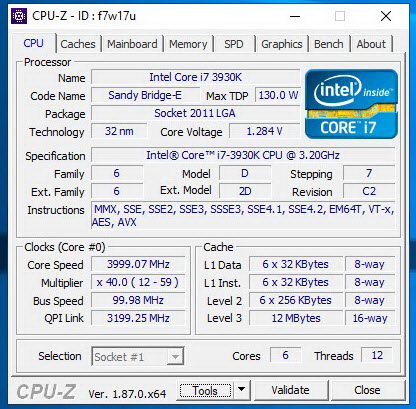

TESTING METHODOLOGY
Thoroughly testing hard disk drives may require time and patience but that's just about it. Of course, that doesn't mean that one must take it lightly, at least not when people base their decision on your results. True some choose to only use 2 or 3 benchmarking suits in order to measure the performance of a drive or drives since quite honestly most benchmarking suites do tend to agree with each other (so it's not really wrong) but we always like to take things a step further not because we have to but because we want to be almost 100% certain of the results we get and post in our charts.
So, in this kind of reviews we will use a total of 7 different benchmarking suites in an effort to bring you the most accurate results across the board. Now the only reason why i say effort is because real-world usage is not always on par with what results one gets by running several benchmarks on a drive and that's mainly because there are many variables at work from ambient temperatures to hardware configurations and even firmware versions. The benchmarking applications we use are the AIDA64 suite (former Everest Pro), HD Tune Professional (as of October 2016 we also record seek times of 3.5” drives), HD Tach RW, ATTO, Sisoftware Sandra Pro, Crystal Disk Mark 64bit and the PCMARK 7 (secondary storage suite). These benchmarking tools are the best in what they do and as you will also see later on their results more or less agree. Each test is performed a total of 6 times and then the average is recorded into the charts. Temperatures are recorded using Hard Disk Sentinel and after 45 minutes of continuous testing in a 23 degrees Celsius temperature controlled room. Finally, we also use an ExTech HD600 dBA meter on each of the drives (5cm away) in order to accurately record their noise levels (during access), although if you don't turn off all system fans when doing so it's quite possible that you will never even hear the drive. The operating system used is a fresh installation of Microsoft Windows 10 Pro with every update installed up until the 20th of June 2019.
TEST RESULTS - AIDA64 / ATTO


TEST RESULTS - HD TACH RW / HD TUNE PRO

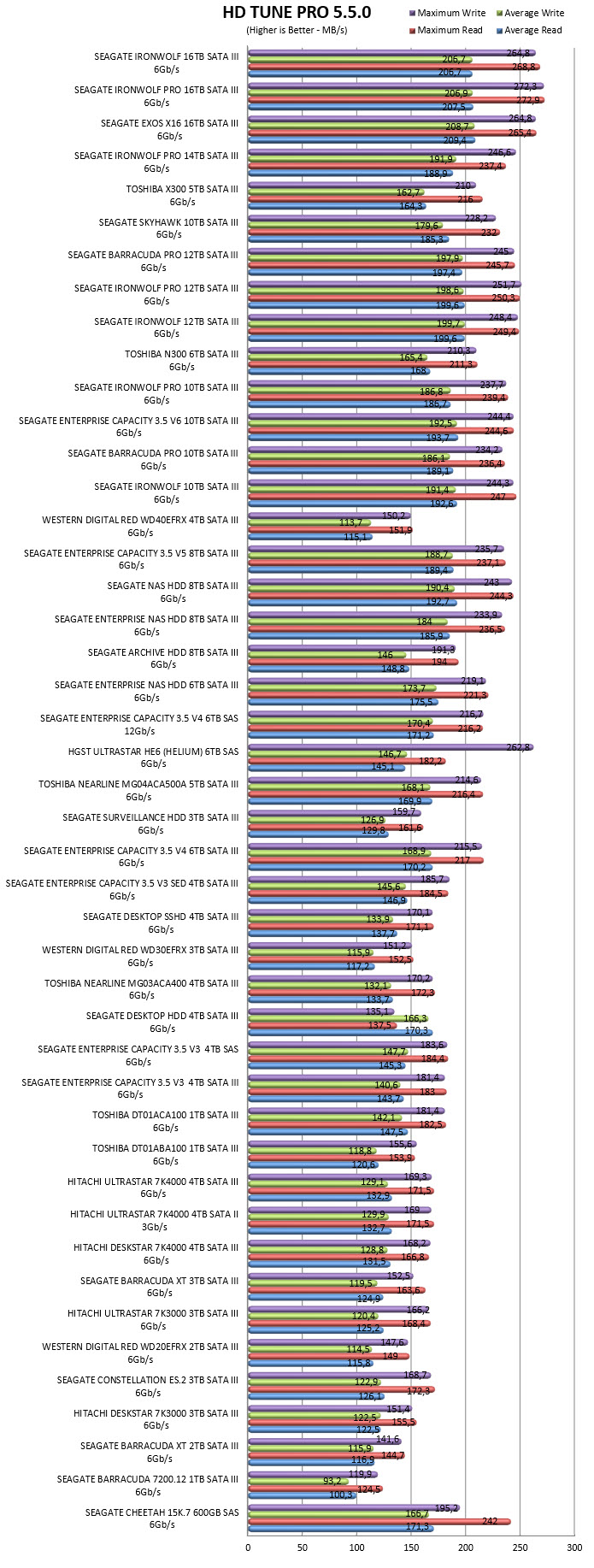

TEST RESULTS - SISOFTWARE SANDRA PRO / CRYSTAL DISK MARK X64


TEST RESULTS – PCMARK 7 PRO / TEMPERATURES / NOISE LEVELS
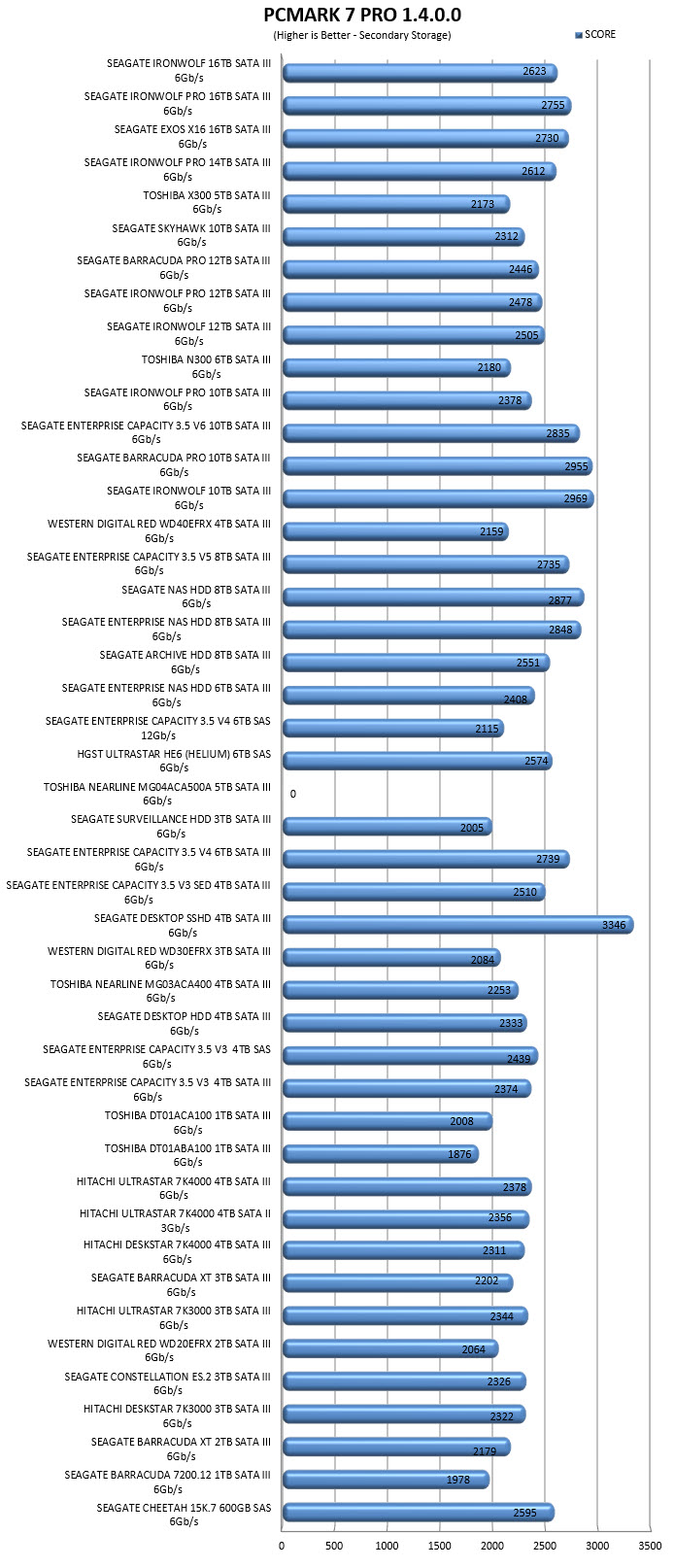


CONCLUSION
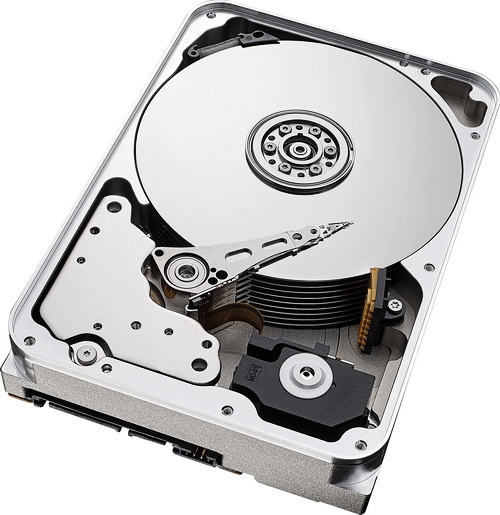
Just like with the EXOS X16 16TB model the IronWolf and IronWolf Pro 16TB models offer the highest single-drive storage capacities professionals and consumers alike have access to currently and if you’ve been around long enough to have used hard disk drives as small as 20MB (in the early 90’s) this is indeed remarkable. Unfortunately, as drive capacities increase so do our needs and with 8k media content just around the corner even the upcoming 20/22TB models may not be enough for some professionals and consumers alike. As for overall performance all three 16TB models released by Seagate trade blows but the EXOS X16 clearly led the pack in sustained numbers in our 10TB internal tests (we recorded over 220MB/s continuously for the EXOS X16 whereas the IronWolf and IronWolf Pro models sometimes fell beneath 200MB/s) but as mentioned a few days ago it’s clear that mechanical drives as we know them have pretty much reached their maximum throughput. Seagate aims to change that by the end of the year with their MACH2 multi-actuator technology which will offer performance numbers we only see in RAID configurations (up to 500MB/s) but until we actually see and test such solutions, we can’t really comment on their performance (it does sound very promising however).
It’s been roughly 3 weeks since Seagate announced availability for their three new 16TB 3.5” drives and since we’re talking about the highest capacity drives in the market today prices are not exactly low. To be more specific as I type these lines the IronWolf 16TB model (ST16000VN001) retails for USD545.32 inside the USA (Amazon.com) and for 599Euros inside the EU (Amazon.de) whereas the IronWolf Pro 16TB model (ST16000NE000) retails for USD629.99 inside the USA (Amazon.com) and for 659Euros inside the EU (Amazon.de). At the end of the day these drives with their massive data storage capacities and impressive performance numbers are not aimed towards casual consumers but people who don’t really care about price and since these are the best 3.5” hard disk drives money can buy today (along of course with the EXOS X16) they certainly also deserve our Platinum Award.

PROS
- Build Quality / Durability (180/300TBW, 1/1.2 Million Hours MTBF)
- Top Of The Charts Performance (SATA)
- Technologies Used (AgileArray / RV Sensors / Secure / RAID Rebuild)
- 256MB Cache
- Massive 16TB Capacity
- Temperatures / Noise Levels / Power Consumption
- 5 Year Limited Warranty (IronWolf Pro)
- 2 Year Rescue Data Recovery Plan (IronWolf Pro)
CONS
- Price (For Some)

 O-Sense
O-Sense





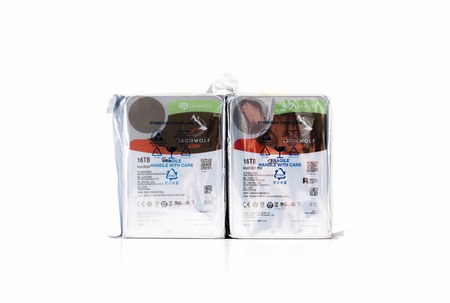






.png)

